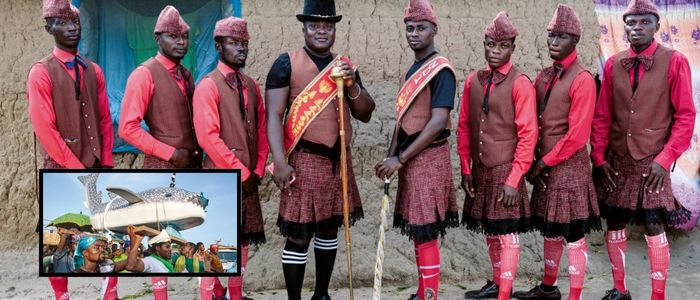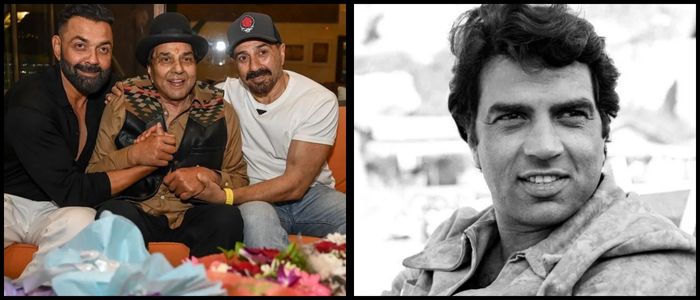It was a final journey unlike any other — an extravagant funeral procession led by military generals and villagers, with custom-built palanquins in the form of a lion, turtle, and chili pepper.
And Swiss anthropologist Regula Tschumi was there to capture it.
Tschumi, who has spent the last two decades studying and documenting Ghana’s singular funerary culture, recently released her findings in a photo book “Buried in Style: Artistic Coffins and Funerary Culture in Ghana.” The book travels from 2004 to 2024, and encompasses traditions of the Ga, Fante, Ewe, and Asante peoples — and allows rare access to a world that merges the sacred, the celebratory, and the surreal.
Figurative Coffins, Secret Burials, Living Traditions
At the center of the book are Ghana’s figurative coffins, now internationally known. And whether cast as the life or trade of the deceased — from football boots and teapots, to roosters and cars — they are custom-made by skilled carpenters and hew closely to both custom and the individual.
But Tschumi also stresses that such decisions are not made by the dead, but by their survivors. “Sometimes the artist has an idea, sometimes the family, sometimes they bring a photograph,” she says. Coffins take 5-10 days to complete, and they are made by hand, although demand from international museums and collectors is growing.
But beneath the patterned turf of colorful coffins is a spirit of religion and reticence. In the above case, for instance, the Ga chiefs and priests are usually buried at night with funeral rites performed with empty caskets or phony palanquins. Traditional burial rites were repressed during British colonialism, forcing communities to adapt or go underground — such as the tradition of burying family members under house floors so spirits could find their way back home.
The rise of the coffin dancers
One striking person in the story is Benjamin Aidoo, the founder of Ghana’s now-viral coffin dancers. What started as a way to uplift the spirits at funerals has transformed into a heavily choreographed art form. Aidoo, now managing Nana Otafrija Pallbearing Services, assisted in teaching the moves, personalizing the routines, and spreading the word of Ghanaian funerals worldwide.
“Why do we mourn? We must celebrate the dead,” Aidoo says. And his collaboration with Tschumi has given her entry to burial rites usually off-limits to outsiders.
But its success has its downside: untrained imitators have broken coffins while performing, causing Aidoo to worry about his reputation. “If a coffin goes down, your career is over,” he said.
The “Laying Out” RitualDeath as Theater
One of the most visually spectacular parts of a Ghanaian funeral is the “laying out” — an all-night vigil for the dead, held the night before interment. In such events, the dead are displayed seated or standing and dressed in clothing of the deceased's life, and the dead are even separately re-arranged at night when nobody is visiting as may be expected for a living person.
A 2017 vigil for a priestess, remembers Tschumi, took a ceremony with the body being moved three or four times, then dressed, and finally slathered for protection in white paste, all within another shrine. At another, the body of a man was posed with a beer at a barbecue, sausages cooking in the background.
From Research to Cultural Legacy
Tschumi’s work has not just recorded tradition but also shaped it. Coffin makers brought her first book to chiefs in Ghana’s Central Region, leading them to embrace palanquins — something they had moved away from for centuries. “It’s fascinating to see how the work of a researcher can change tradition,” she says.
With her camera and privileged access to Ghana’s funeral insiders, Tschumi has cracked and opened a rare window onto a culture that turns heartache into art, identity, and community. From teapot coffins to dancing pallbearers, from elaborately staged pyjama parties for the dead to all-night vigils, Ghana’s funeral practices change — and retain tradition — in ways we have yet to imagine.
Top

Buried in Style: Ghana’s Vibrant, Secretive Funeral Culture Revealed Through Photography

It wasn’t announced until two years ago, but “Obituary for Pharaoh,” as it is officially titled, took two years to organize — a ceremony so important and rare that it had not been performed in nearly a quarter of a century. The ceremony in Greater Accra, which took place in November 2024, was replete with symbolism and secrecy.











